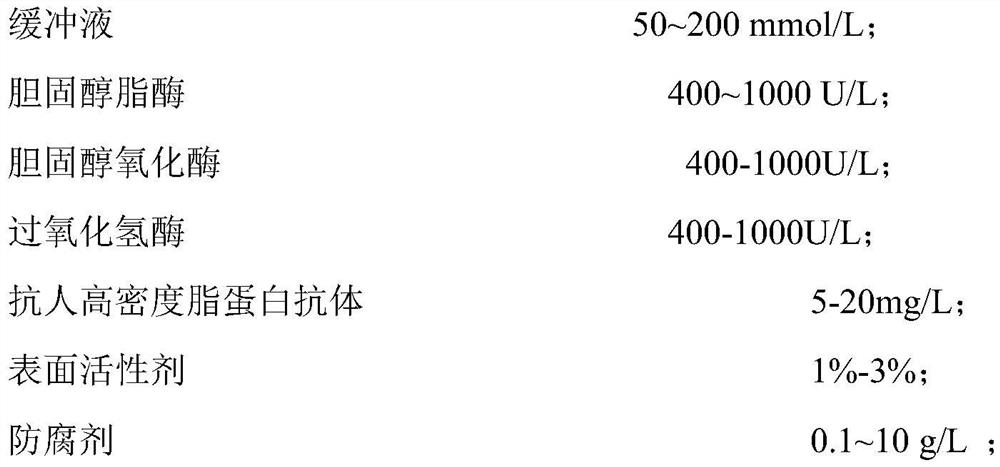Enzymatic detection kit for small and dense low density lipo-protein cholesterol
A low-density lipoprotein and detection kit technology, applied in the field of biomedicine, can solve the problems of incomplete precipitation, inaccurate measurement results, and inapplicability to automatic biochemical analyzers, etc., to achieve simple operation, good specificity, and high measurement results Accurate and reliable results
- Summary
- Abstract
- Description
- Claims
- Application Information
AI Technical Summary
Problems solved by technology
Method used
Image
Examples
Embodiment 1
[0032] The basic flow of embodiment 1 prokaryotic expression system
[0033] Obtain the target gene, use the cloning plasmid containing the target gene as a template by PCR method, design a pair of primers according to the gene sequence, introduce different enzyme cutting sites into the upstream and downstream primers, and obtain the desired gene fragment by PCR cycle.
[0034]It should be noted that monoclonal antibody 1 and monoclonal antibody 2 are designed for specific sites of peptide 82-192 and peptide 202-35 of high-density lipoprotein respectively, and monoclonal antibodies can be prepared using hybridoma technology, for example The monoclonal antibody is produced by a hybridoma cell line selected from the following group: CCTCC-C200923, CCTCC-C200924 or CCTCC-C200925 (specific preparation methods can be found in: Ou Lanxiang et al., International Journal of Laboratory Medicine, 2019, 40 (22), recombinant Prokaryotic expression of human lipoprotein-associated phospholi...
Embodiment 2
[0039] In this example, the interference effect of anti-human high-density lipoprotein antibody on eliminating high-density lipoprotein was evaluated, and the scheme is as follows, see Table 1:
[0040] Table 1.
[0041]
[0042]
[0043] Table 2 is the specificity experimental evaluation. Wherein, the experimental condition parameters adopted in Table 2 are as follows:
[0044] Validation reagent batch number: 20190601
[0045] calibrator
[0046] Batch number of the company's supporting calibration products: 20190601
[0047] Machines used and parameter settings:
[0048] Dirui CS-600B automatic biochemical analyzer, the parameters are set as follows
[0049] SDLDL: 660nm / 546nm; two-point endpoint method; 3 / 270 / 90
[0050] Table 2.
[0051]
[0052] Therefore, it can be seen from Table 1 and Table 2 that the addition of anti-human high-density lipoprotein antibody (as shown in Scheme 2-4) has a significant effect on inhibiting high-density lipoprotein, and th...
Embodiment 3
[0054] This implementation case mainly evaluates the concentrations of the two antibodies used. The scheme is shown in Table 3 below:
[0055] table 3.
[0056]
[0057] Table 4 shows the specificity experimental evaluation of the protocol used in Table 3.
[0058] Table 4.
[0059]
[0060] Conclusion: The higher the concentration of the antibody used, the higher the inhibition rate of high-density lipoprotein. When it reaches 12mg / L, the inhibition rate reaches the best
PUM
 Login to View More
Login to View More Abstract
Description
Claims
Application Information
 Login to View More
Login to View More - R&D
- Intellectual Property
- Life Sciences
- Materials
- Tech Scout
- Unparalleled Data Quality
- Higher Quality Content
- 60% Fewer Hallucinations
Browse by: Latest US Patents, China's latest patents, Technical Efficacy Thesaurus, Application Domain, Technology Topic, Popular Technical Reports.
© 2025 PatSnap. All rights reserved.Legal|Privacy policy|Modern Slavery Act Transparency Statement|Sitemap|About US| Contact US: help@patsnap.com



